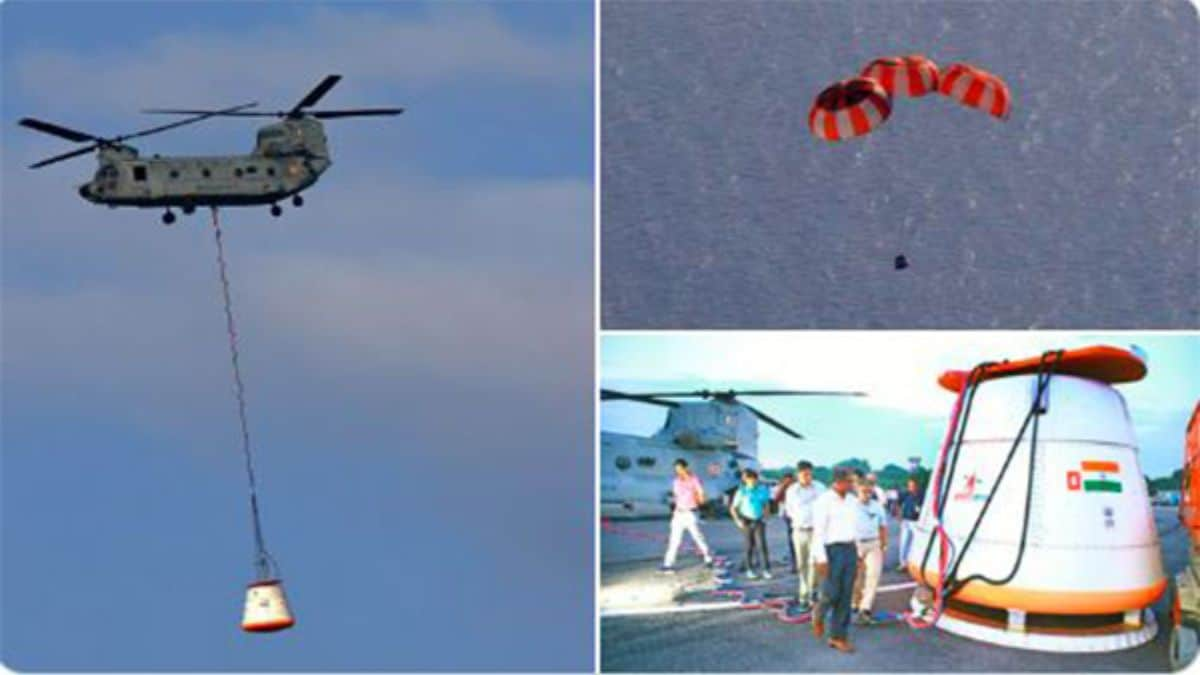

The Indian Space Research Organisation (ISRO) has achieved a significant milestone in its Gaganyaan mission, India's first human spaceflight program, by successfully conducting the first Integrated Air Drop Test (IADT-01). This test is a crucial step in ensuring the safe return of astronauts to Earth. The IADT-01 was carried out at ISRO's spaceport in Sriharikota.
The Gaganyaan mission aims to send a three-member crew to a low Earth orbit of approximately 400 km for up to three days. A key priority for ISRO is the safe return of the astronauts, and the parachute-based deceleration system is critical to achieving this. The IADT-01 was designed to validate the entire parachute system, which slows down and stabilizes the crew module during re-entry and splashdown.
The test involved the use of a five-tonne dummy payload, representing the crew module, which was released from an aircraft. The parachute system, jointly developed by ISRO and the Defence Research and Development Organisation (DRDO), includes multiple parachutes. The sequence begins with two drogue parachutes for initial deceleration, followed by pilot chutes and three main parachutes to ensure a safe descent. ISRO officials stated that the primary goal of the test was to assess the complete functionality of the parachute deployment system, including the step-by-step release of the parachutes. The successful completion of the test demonstrates the readiness of this critical aspect of the mission and enhances confidence in the overall safety design.
The IADT-01 is a significant milestone in the Gaganyaan mission's pre-flight preparations. ISRO had previously conducted separate trials, including drogue parachute deployment tests and rail-track rocket sled trials to simulate failure scenarios. However, IADT-01 is the first test to demonstrate the integrated system in a nominal configuration. ISRO plans to conduct further tests to cover off-nominal scenarios, such as single-parachute operation, delayed deployment, and system failure simulations, to maximize safety margins.
The IADT-01 involved the collaboration of multiple agencies, including the Indian Air Force, DRDO, Indian Navy, and Indian Coast Guard. After initial pre-mission trials in May 2024, the IADT was put on hold to address concerns regarding the helicopter selected for the test. These issues have been resolved, and ISRO will proceed with future tests after a thorough analysis of the IADT-01 test data. Initial plans included conducting seven IADTs, with the final number depending on the test results.
In addition to the IADT tests, ISRO is preparing for other crucial tests, including the second Test Vehicle Demonstration (TV-D2) mission and the first uncrewed Gaganyaan mission (G1). The first uncrewed mission is scheduled for December 2025 and will feature a half-humanoid robot named Vyommitra. The manned mission is planned for 2028, which will make India the fourth country in the world to independently send humans into space.
The Gaganyaan mission is a significant step for India's space program. The mission will carry a three-member crew to a low Earth orbit of about 400 km and will last up to three days. A safe return to Earth is a top priority for ISRO, and systems like the parachute-based deceleration mechanism are key to ensuring that.